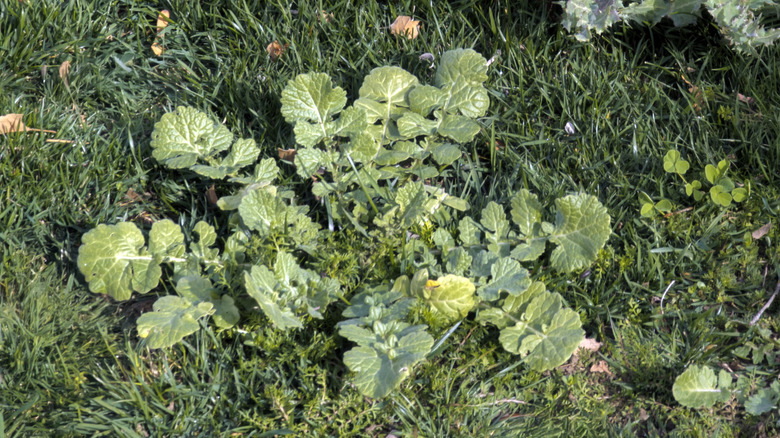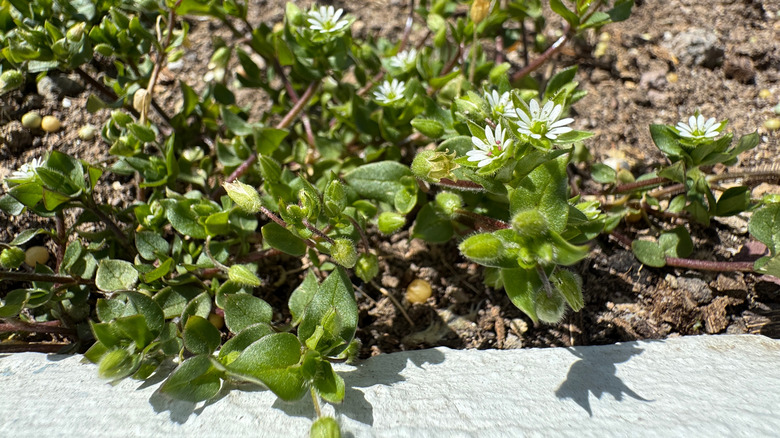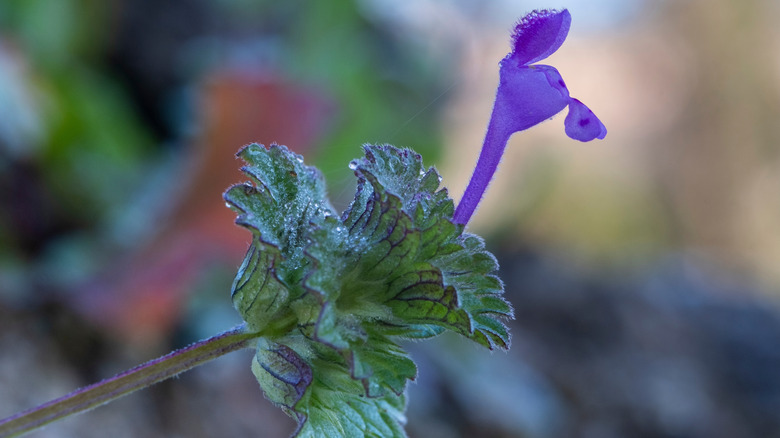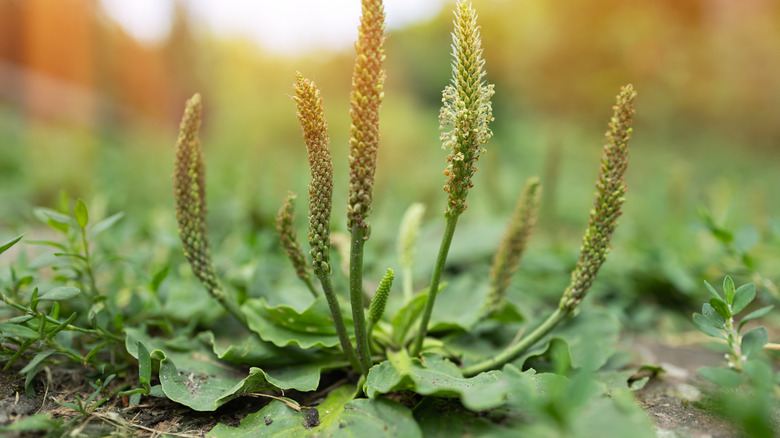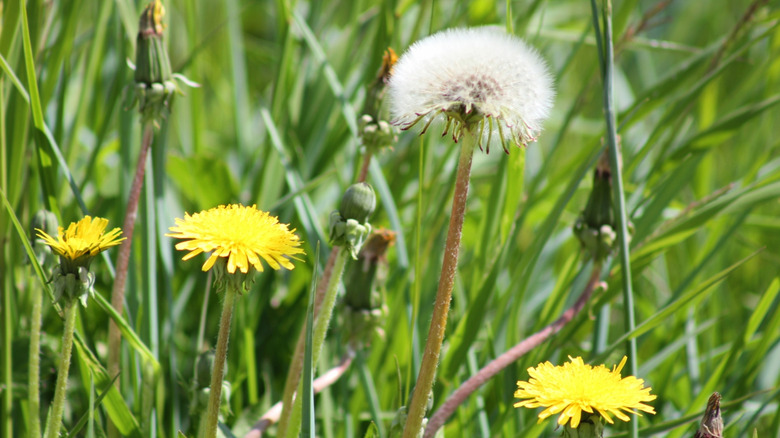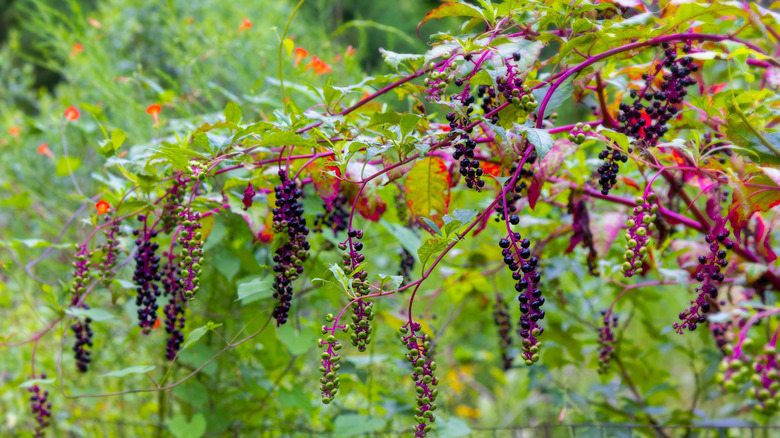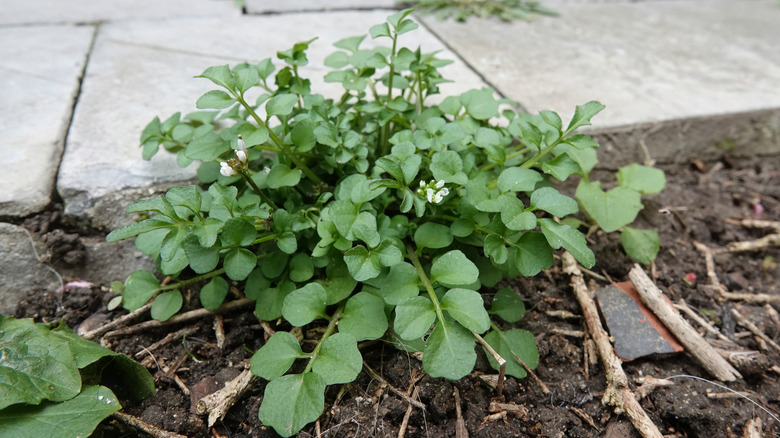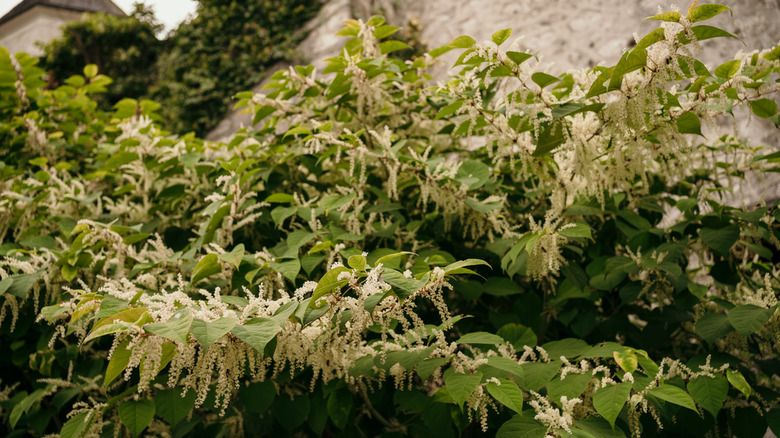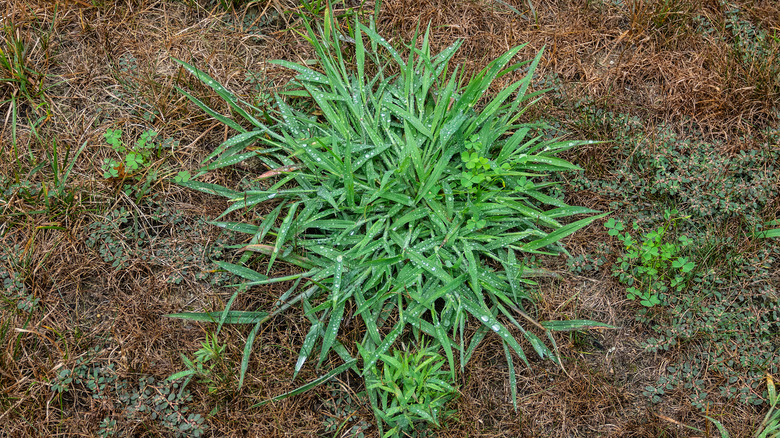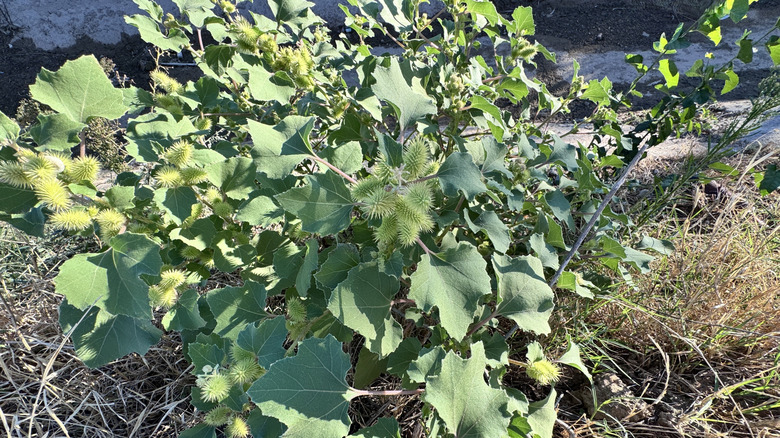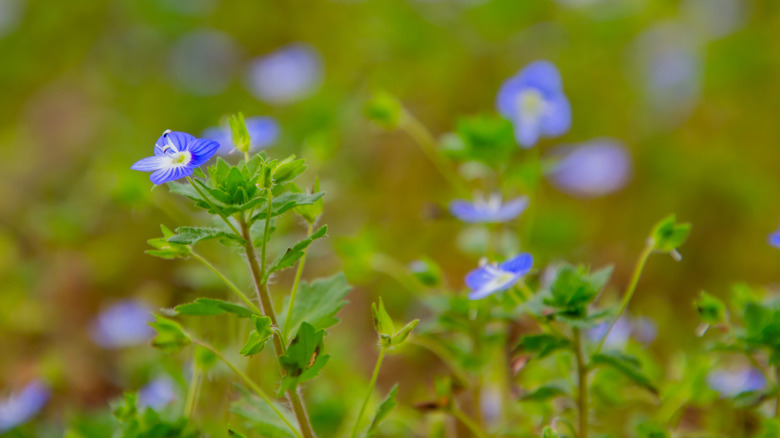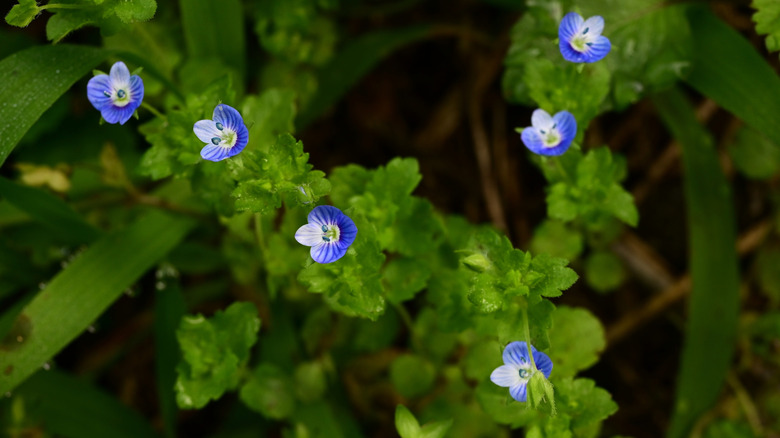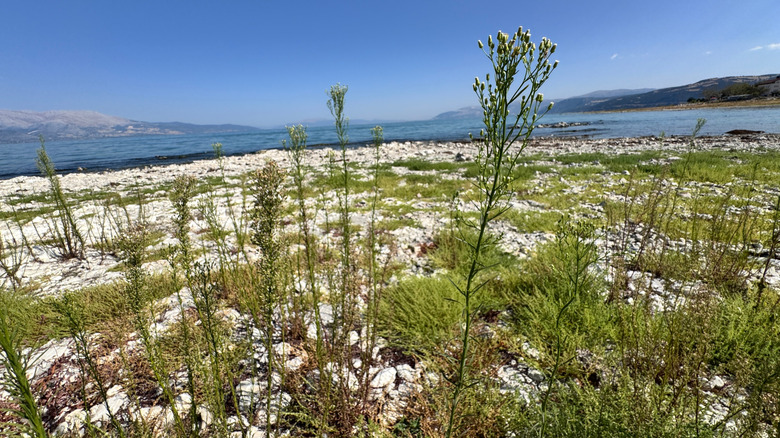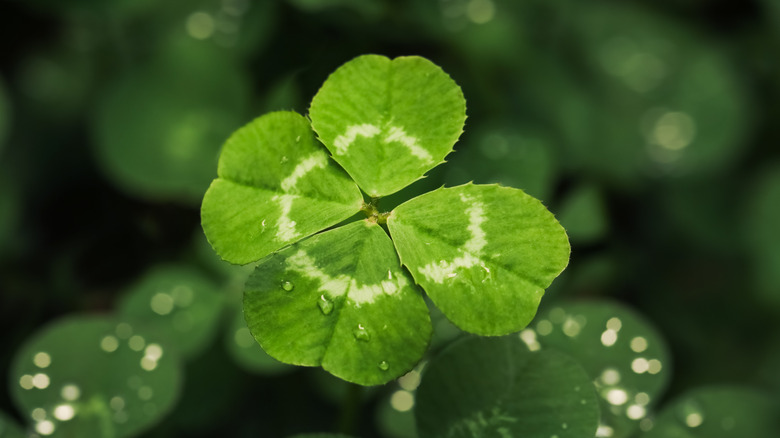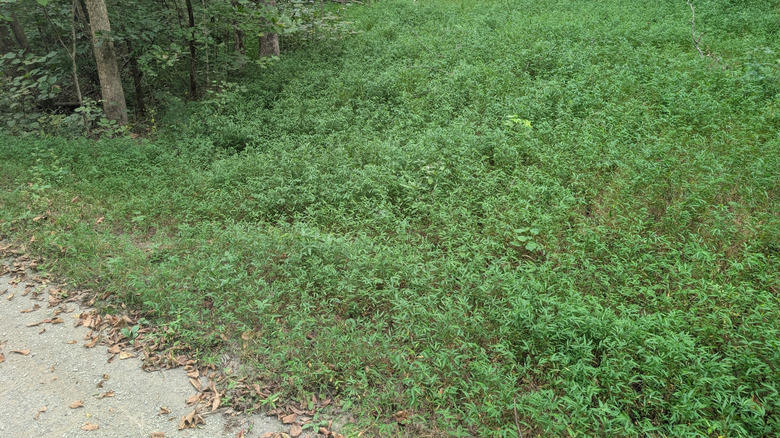Fall-Germinating And Fast-Growing Weeds To Tackle Now Before They Spread
Weeds are a constant problem if you have a yard or garden. They take advantage of any weakness in your lawn and quickly dominate if given the chance. Once they are established, it's almost impossible to eliminate them without taking extreme measures. For most weeds, early intervention is your best chance to reclaim your lawn or garden. Fall is one of the best times to try and control weeds.
Generally, weeds fall into two categories: perennials that return each year and annuals that complete their life cycle in one season. For annuals, most either start sprouting in winter or spring. Fall tends to be when many species begin their growing process and germinate. So this is the ideal time to target unwanted growth before it takes hold and becomes hardy. While the rest of your plants are dying back from the cold, weeds are making their move.
It's important to stay proactive so you can get ahead of this constant uphill battle. Just make sure you're focusing on using great strategies for removing weeds, and avoid ones that aren't worth your time. Research the practices that work best for the weeds you're fighting, as the ideal removal method often depends on how the plant spreads, what makes them do well in your garden, the root type, and whether it's a broadleaf or not.
Chickweed
Common chickweed (Stellaria media) makes its appearance in the fall. Applying weed killer during this time gives you the best chance of controlling it. Though small, chickweed can quickly overtake an area and crowd out nearly all other plants within a few years. Additionally, if you can keep your lawn thick and healthy, you have a better chance of drowning out the weed before it can establish itself. In addition to the common species, there is sticky chickweed (Cerastium glomeratum), which can also become a problem.
Henbit deadnettle
Henbit deadnettle (Lamium amplexicaule) is related to mint. However, it's now naturalized across much of the world, including the United States. It's commonly found on lawns, fields, pastures, and along the side of roads in almost every state. Generally, henbit is considered a winter annual or biennial, but it is also sometimes a spring annual. Proper mowing and fertilization help control this weed, but you can also pull it by hand whenever it appears. In extreme situations, you can kill henbit deadnettle weeds from your lawn with vinegar.
Plantain
Plantains (Plantago spp.) are pretty hard to remove from a garden. Each plantain can produce up to 20,000 seeds, and if any part of the crown remains after weeding, it can regrow. They are also durable to mowing and trampling. To get rid of them, the best option is herbicides, which should be used at the end of summer or early in the fall. There are a few different kinds of plantains in the US, including the broadleaf plantain (Plantago major). This species is usually found in locations without a lot of foot traffic, including gardens, landscaped areas, and along roads.
Dandelions
Dandelions (Taraxacum officinale) are a familiar sight in lawns across the United States. They are problematic weeds that can take over a yard. The best way to get rid of them is by pulling them out as they appear. However, you can also set down mulch or herbicides while they are germinating. A yard full of dandelions tells you about your lawn's condition and may be a sign that the soil has a lot of nitrogen and potassium.
Pokeweed
Pokeweed (Phytolacca americana) is a perennial found in pastures, forest edges, and moist yards in most of the U.S. except the driest part of the western and northern states. It's a poisonous plant you'll want to get rid of quickly if you have curious children or pets around. Hand-pulling young plants, smothering, and using herbicides on germinating seeds are the best ways to get rid of pokeweed. Germination typically occurs in spring and summer, with rapid growth in fall — the best time to control it before it fully establishes.
Hairy bittercress
Hairy bittercress (Cardamine hirsuta) is a plant native to Europe and Asia that has been introduced into most of North America as well as other countries. It's an early grower and is one of the first weeds you'll see in the new year. To remove this plant, you can use preemergence herbicides in the fall. However, apply it only in areas where turfgrass isn't desired, as it can also hinder lawn growth. Another solution is to hand-pull the plants and throw them away before they can disperse seeds.
Japanese knotweed
Japanese knotweed (Fallopia japonica) is an invasive weed birds love, but it will wreak havoc on your garden, which is why it's important to try and catch it early in the fall. It's an incredibly strong plant that can easily push through foundations, pavement, and other stones. It's also fast-growing, and in just one season, it can reach up to 10 feet tall. This weed is found in almost every state except the high Rocky Mountains and the most arid or southern locations. Smothering and herbicides are really the only two effective ways to remove the plant.
Crabgrass
Despite crabgrass (Digitaria spp.) being an annual plant, it's quite a pain, especially if it starts outcompeting your cool-season turfgrasses. It enjoys warm areas, but some species can tolerate hardy zones anywhere between 2 and 11. The easiest way to remove crabgrass from your lawn is to use herbicides, and you usually want to do it in the spring. However, you can also take steps to eliminate this pesky grass in the fall by seeding other grasses that can outcompete it. Ultimately, the best defense against crabgrass is maintaining a thick, healthy lawn.
Common cocklebur
The common cocklebur (Xanthium strumarium) grows fast. It is found all over the world, including most of the United States, Canada, and Mexico, though it does struggle a little in mountainous regions. It's a problematic plant that can kill livestock and cause irritation on the skin. Thankfully, the cocklebur weed is the lawn nuisance that you get rid of with the proper techniques. While spring was once the best time for removal, cocklebur now often appears later in summer, making fall an effective time to tackle it with hand-pulling or herbicides.
Corn speedwell
Corn speedwell (Veronica arvensis) is found all over the United States except for the peaks of the Rocky Mountains. It can germinate at any time, as long as the weather is cool and moist. If you are somewhere they germinate in the fall, this is a great time to get rid of them. Regular mowing, proper nitrogen levels, and dense turfgrass help manage corn speedwell, while pre- and postemergence herbicides can control persistent growth.
Wild Violet
Also known as blue violet or Viola sororia, wild violet is another weed you need to remove as soon as you see it. It may be beautiful, but it's deceptively aggressive. Though it's native to parts of the U.S., especially Minnesota, it is an aggressive grower that is hard to get rid of once it establishes itself. It spreads by both rhizomes and seeds. Early control with dense turfgrass can help, but once established, repeated triclopyr treatments are often the only option.
Marestail
Marestail (Conyza canadensis), or horseweed, may be native to North America, but that doesn't make it any less irritating. It tends to emerge in the fall, and its seeds are spread sometime between August and October. Each plant releases more than 200,000 seeds, allowing marestail to spread and dominate quickly. It's mostly found in tilled fields or dry, disturbed lands. It's fairly resistant to herbicides, so ripping them out of the soil before they can spread the seeds is your best option.
Clover
Clover can be both a charming groundcover and a nuisance in lawns and gardens. There are a few species of clover found in the U.S., and a few of them can be considered problematic in the right conditions. Dutch white clover (Trifolium repens) is the most common one that people think about first. It's not necessarily a bad plant, as it brings in a lot of pollinators. However, sometimes it can take over a space, spreading out far and competing with the surrounding grass. There are plenty of ways to get rid of clover in your lawn, including smothering, digging it up, and using nitrogen-heavy fertilizers.
Japanese stiltgrass
Japanese stiltgrass (Microstegium vimineum) is no joke. This is a highly invasive plant, to the point that scientists had to call on Wisconsin homeowners to help stop the spread. It was first found in Tennessee, but has migrated to most of the United States east of Texas. Each plant can produce 1,000 seeds a year. You can use herbicides as they are germinating, or pull them up as soon as you see them. String trimming can help, but make sure you cut through the stem nodes to prevent regrowth.
